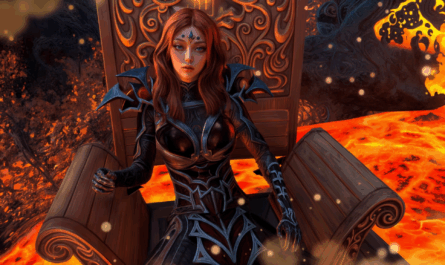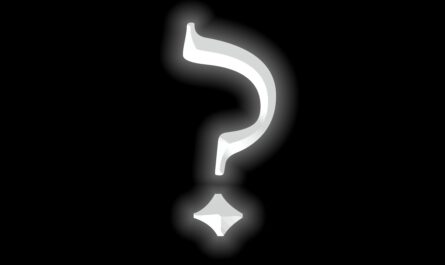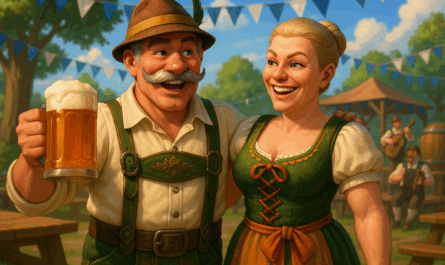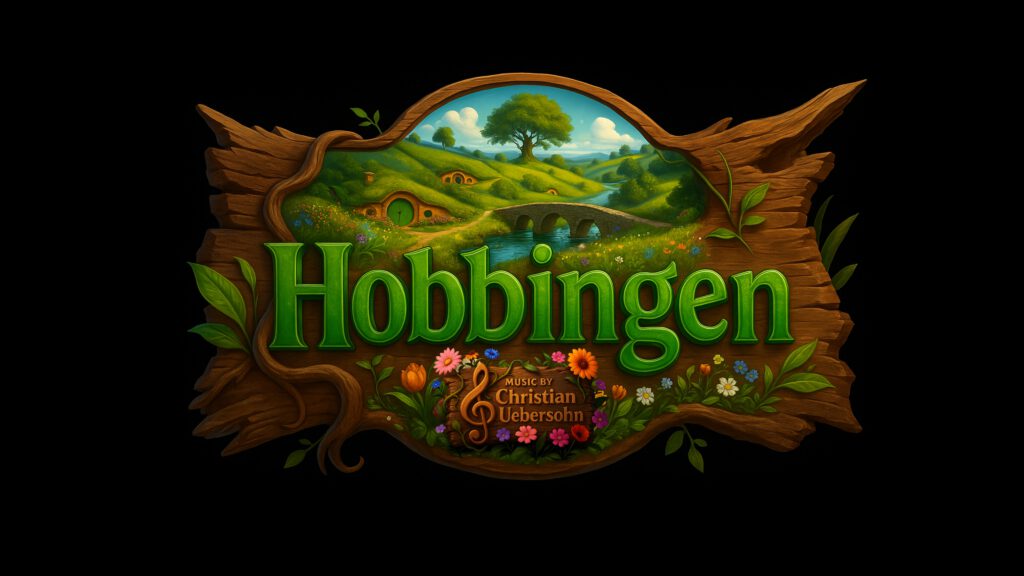
I have been composing fantasy music for some time now and with “Hobbingen” I want to immerse myself even more in the cheerful, narrative world of film soundtracks. My aim is to create soundscapes that carry scenes, intensify emotions and immediately conjure up little films in your head – ideal as background music for cheerful, playful settings.
Background & Vision
I am fascinated by how soundtracks can precisely direct moods: One change of chord – and a scene shifts from curiosity to warmth, from lightness to adventure. “Hobbingen” is my homage to this kind of musical storytelling: bright, lively, pastoral – with lots of woodwind charm and dancing strings.
In the long term, I want to create music that adapts flexibly to scenes and not only lies “over” images, but shapes them tangibly.
Mein Kompositions-Workflow
Instead of just writing complete tracks “in one go”, I soon started working more and more scene-based:
- Scene study: I look at the scene (tempo, direction of movement, emotional curve).
- Motif design: A short theme (2-6 bars) defines colour and direction.
- Orchestration:
- Woodwinds (flute, oboe, clarinet) for lightness and humour.
- Strings (pizzicato/spiccato) for movement, legato for warmth.
- Harp/piano as a shimmering adhesive between the sections.
- Percussion discreet (shaker, tambourine, toms) for pulse, not for impact.
- Harmony & form: Bright keys, modal colourings, clear cadences; modular form so that sections can be seamlessly switched on/off.
- Fine drawing: transitions, pauses for breath, small rubati – so that it appears organic.
This process allows me to write music “on sight”: to fit the moment, without the compulsion to always run through a complete track.
The preview: a complete track called “Hobbingen”
This time, however, there is a complete track as a taster. I’ve called it “Hobbingen” and combined it with a short video that uses AI images – simply so that you can immerse yourself in the mood visually as well as hearing it.
What you can expect:
- A cheerful main theme that is easy to hum along to.
- Cheerful flute, reminiscent of village and landscape scenes.
- A lyrical middle section with warm strings before the theme returns lively.
Technology, AI images & a small lapse
The images in the video were generated with AI and then animated with Kling AI. I made a faux pas: although I had actually prepared the images for 16:9, I accidentally used some 4:3 variants. This makes the result look classically framed in places – which I can cope with, as the focus is on the music anyway. For future clips, I’ll pay more attention to standardised 16:9 sources to make the movement even smoother.
Attached I post the most important still images (created with OpenAI Sora) to give you an impression of the visual direction. Prepared for the 16:9 format!
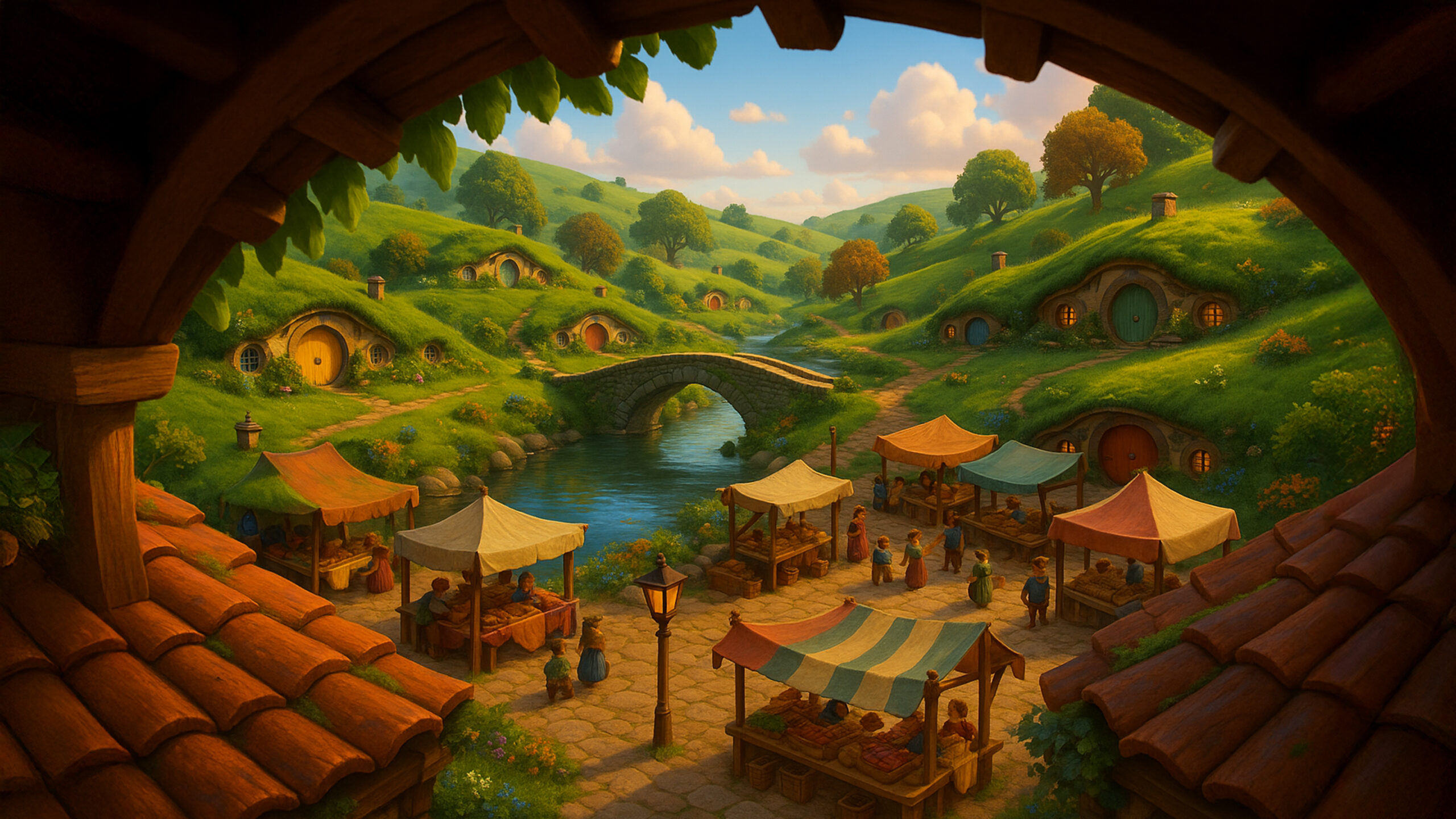
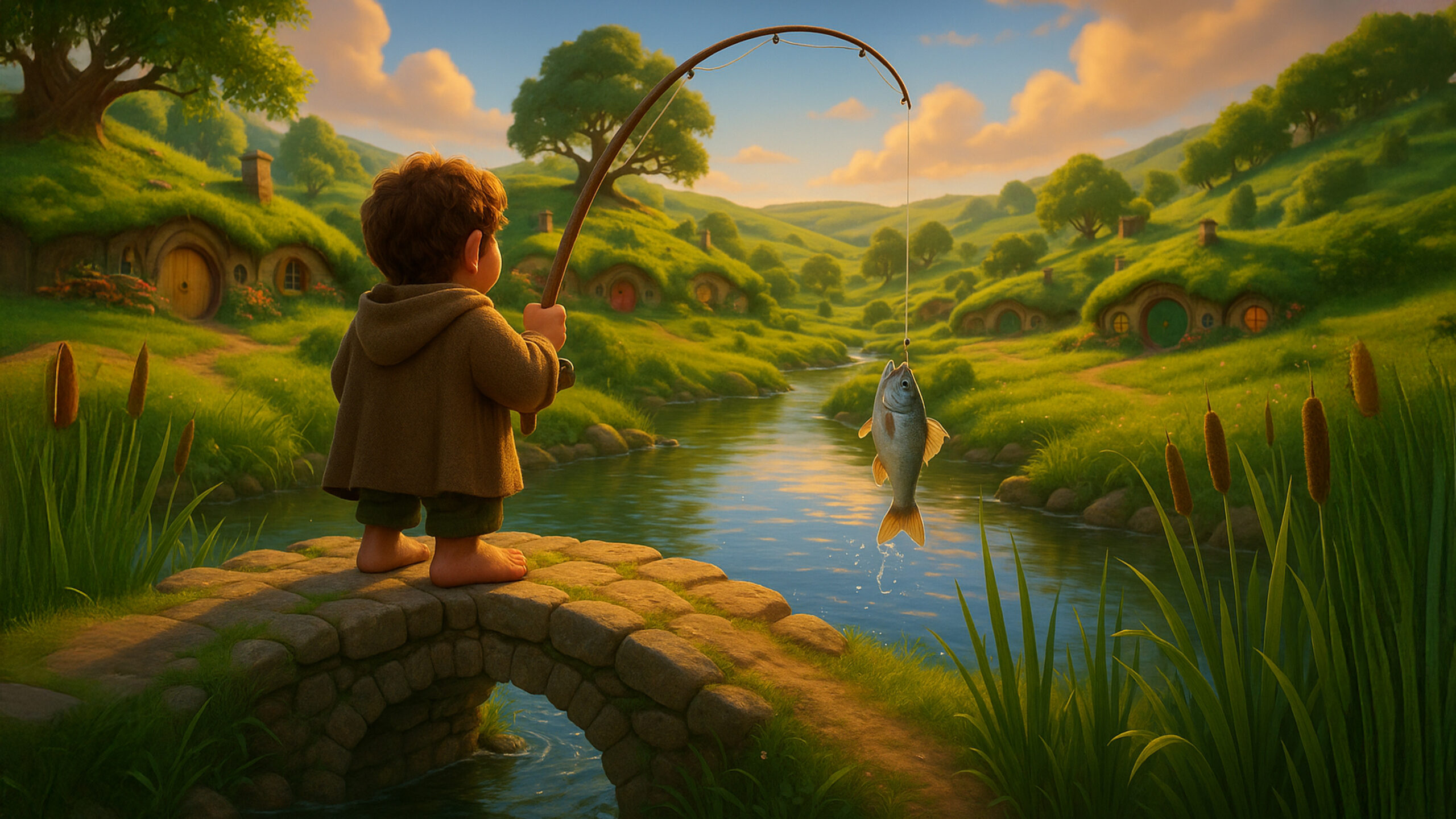
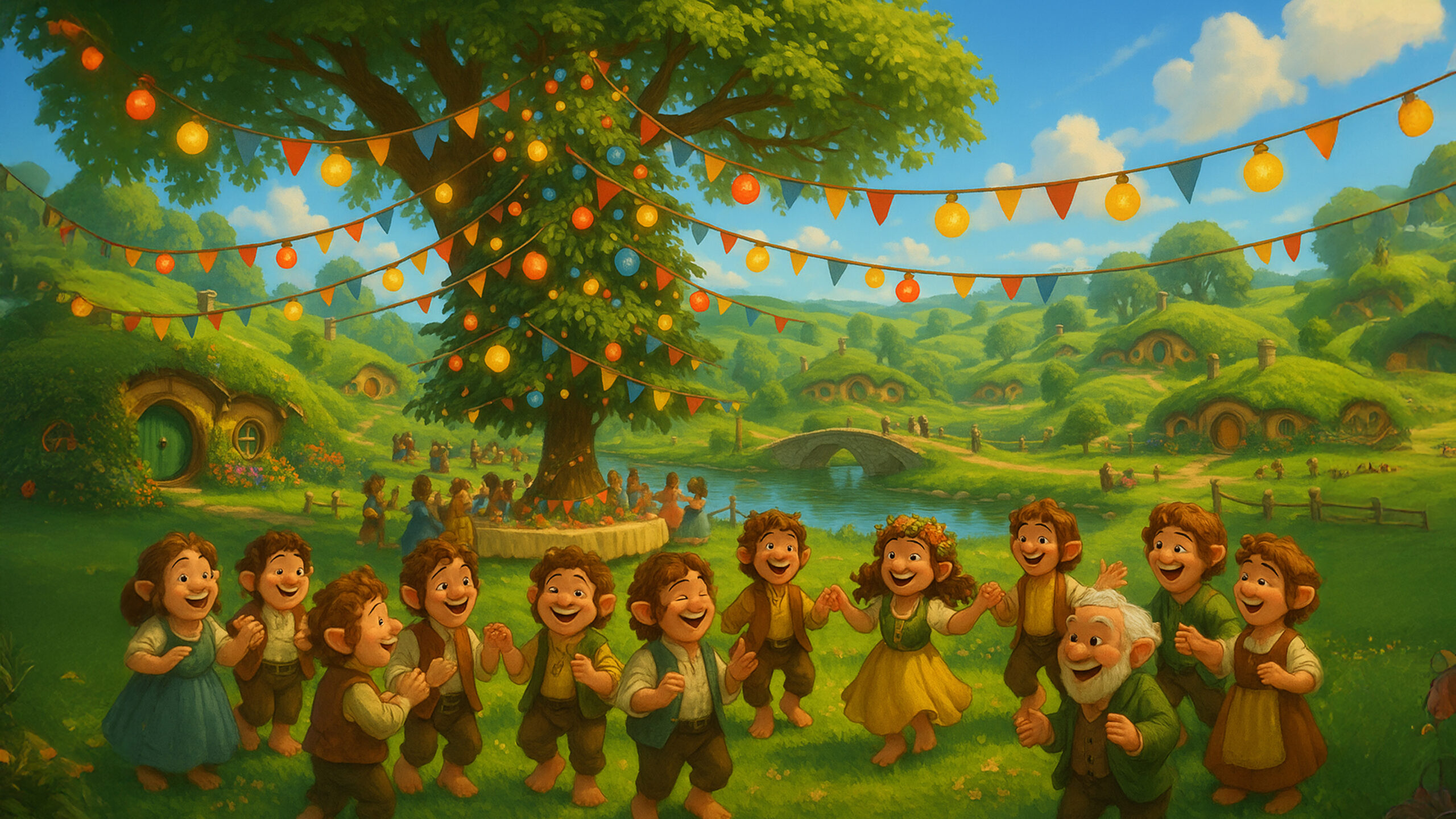

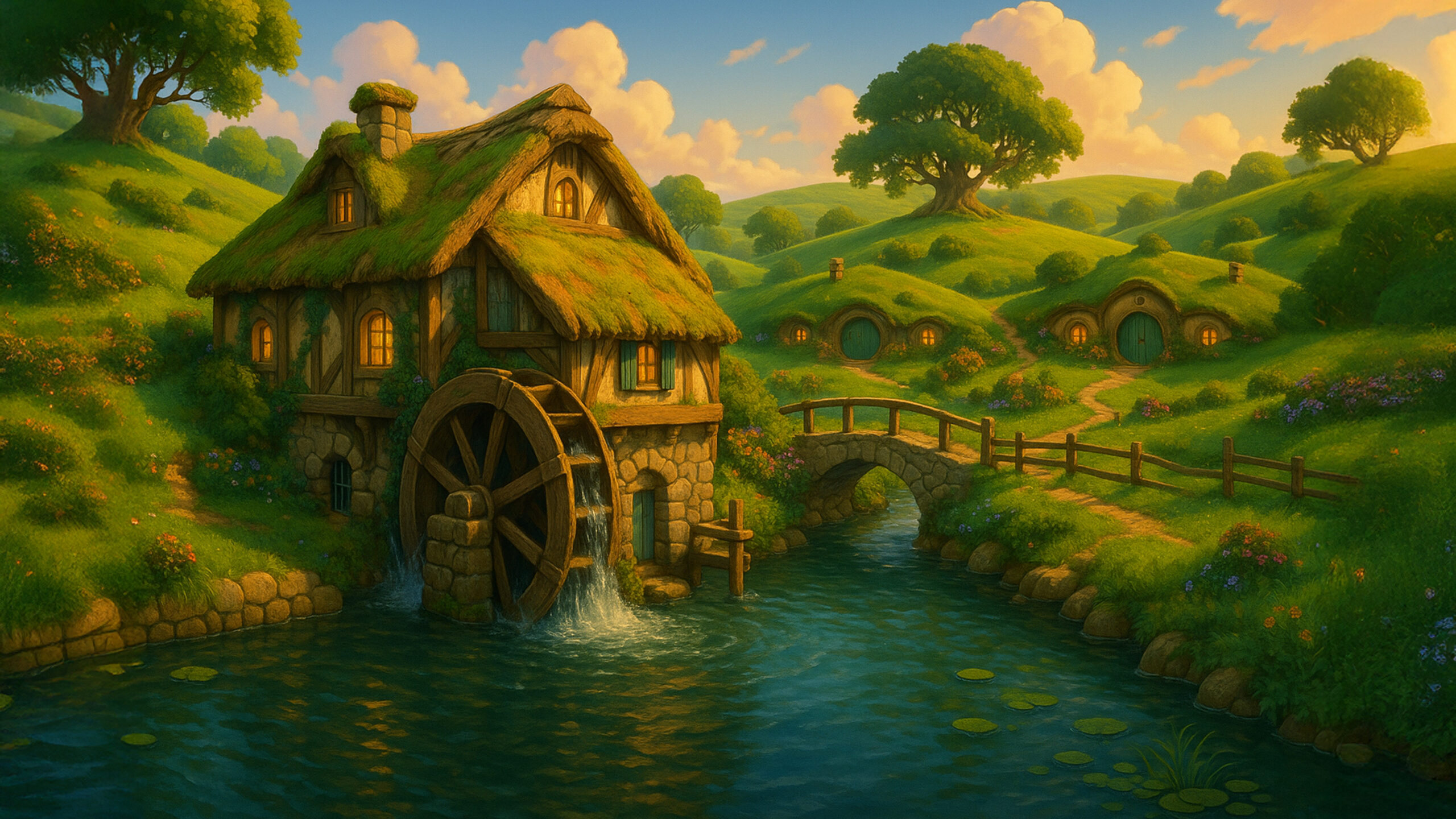
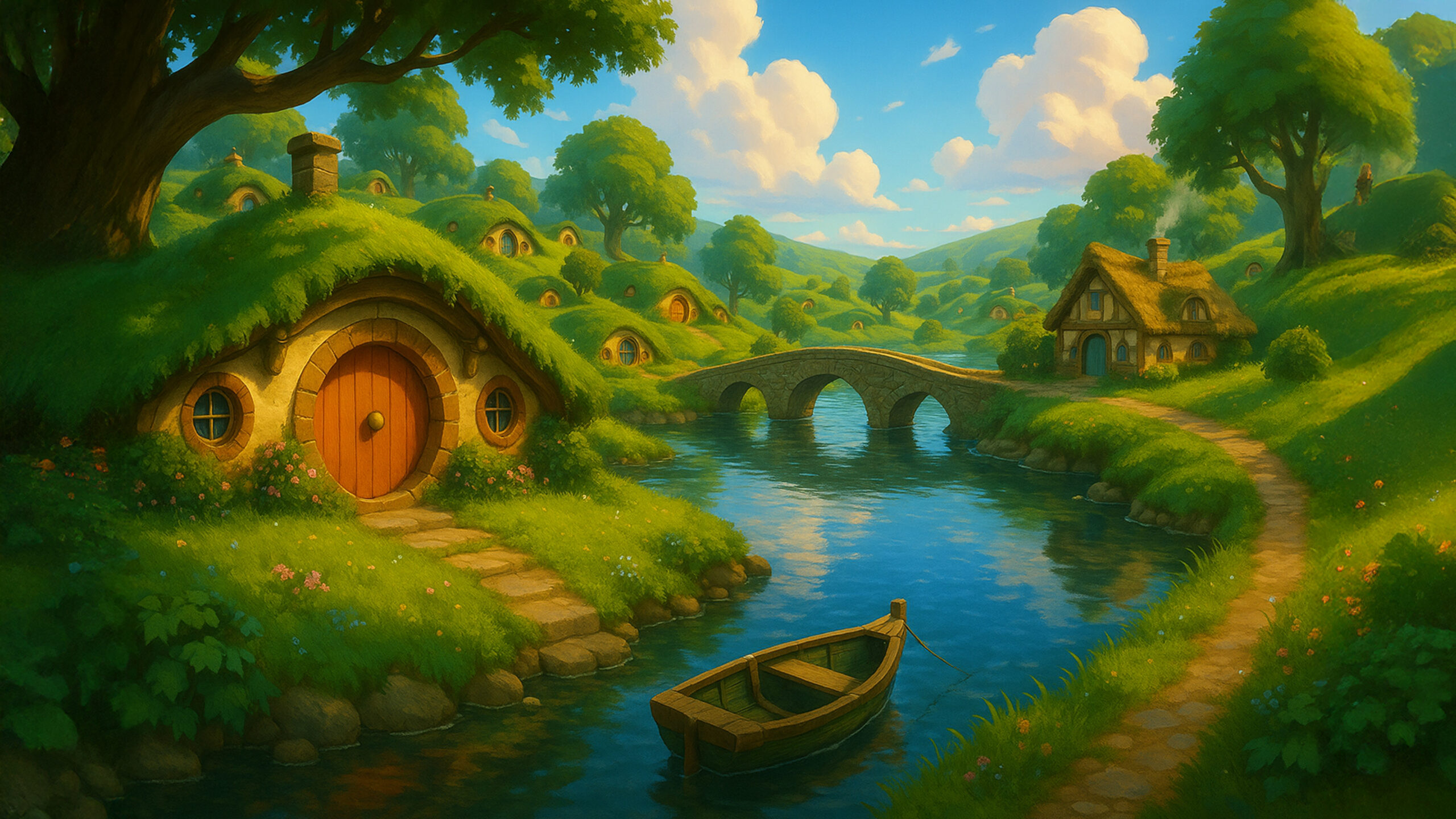
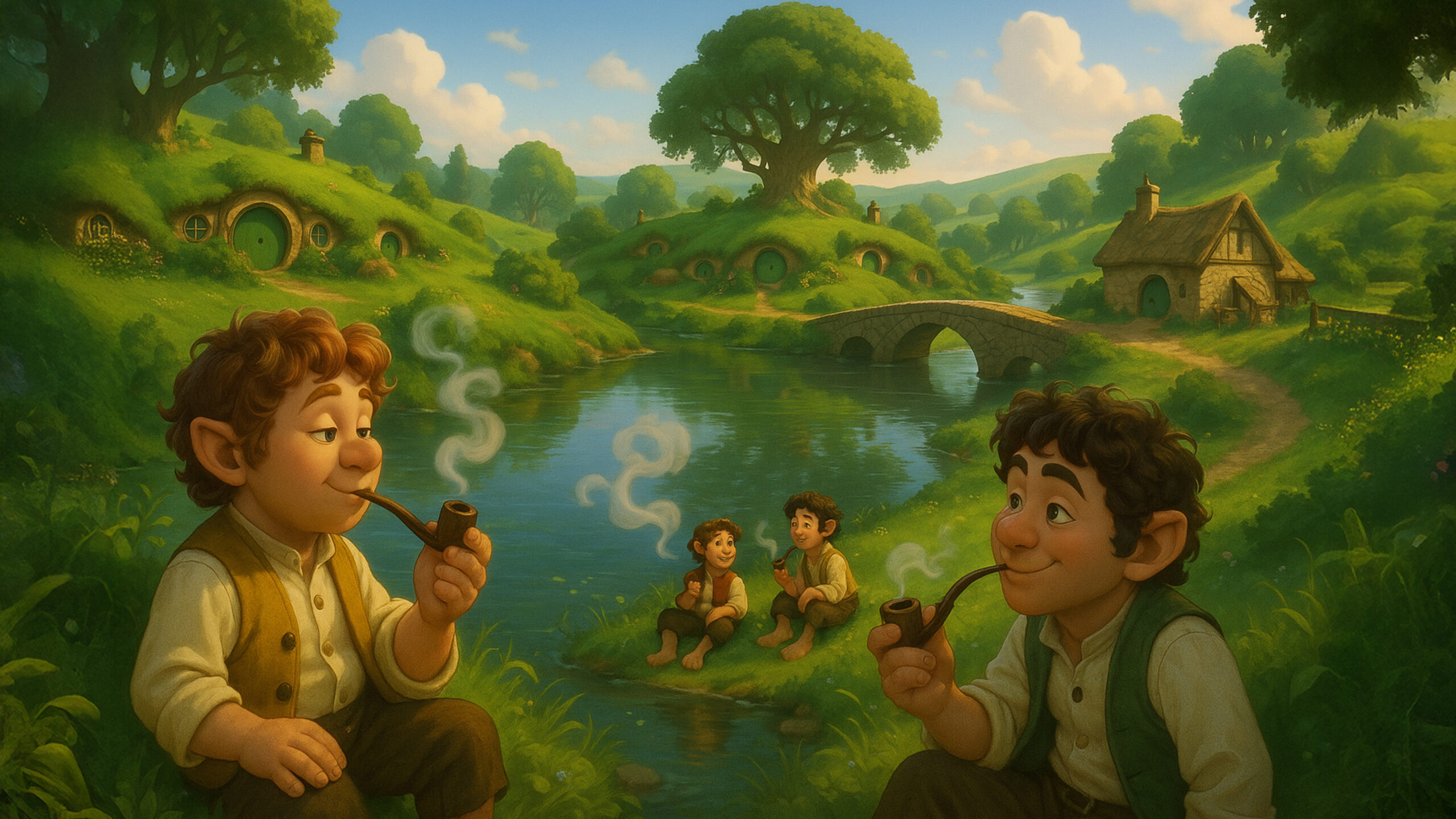
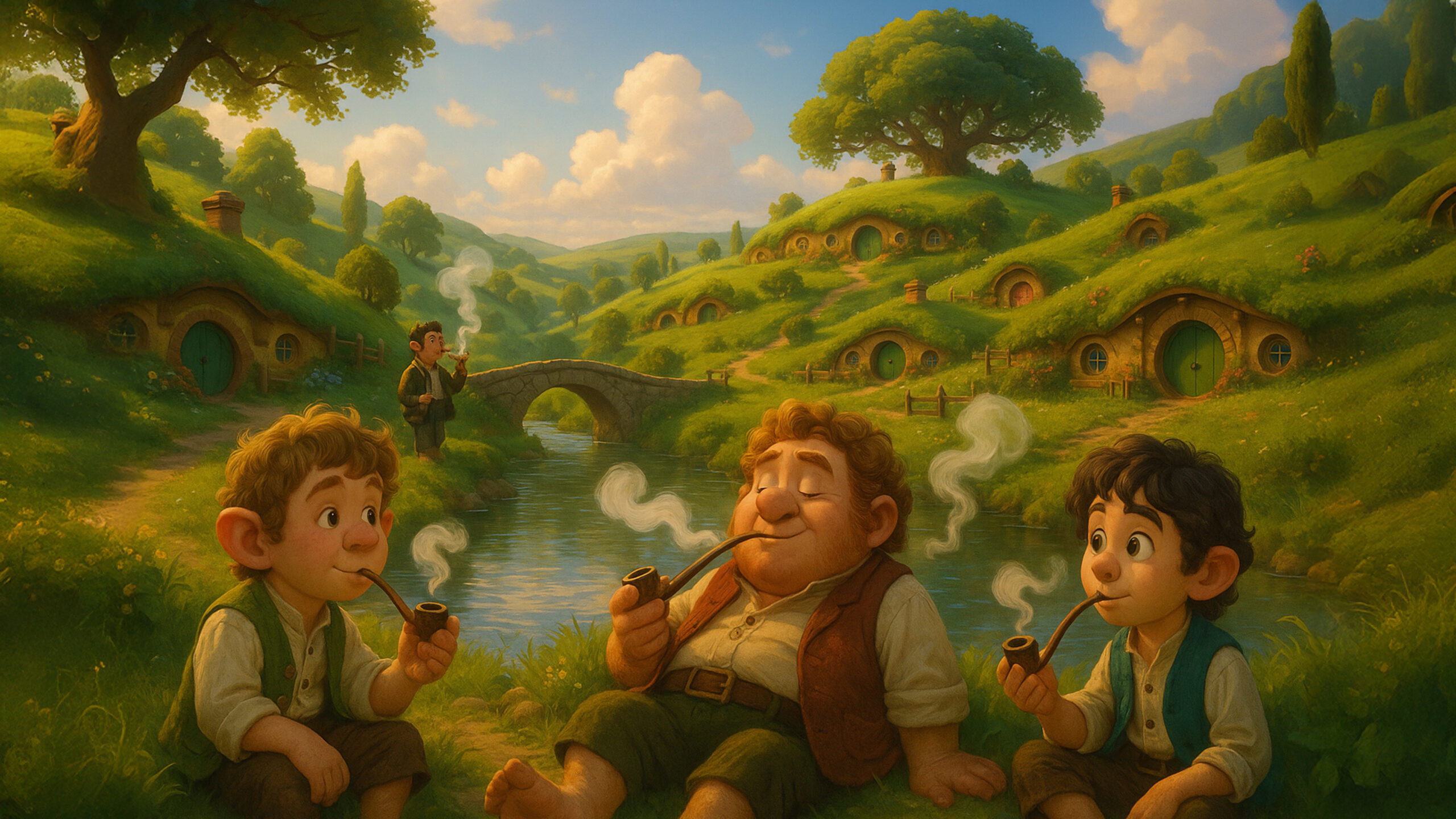
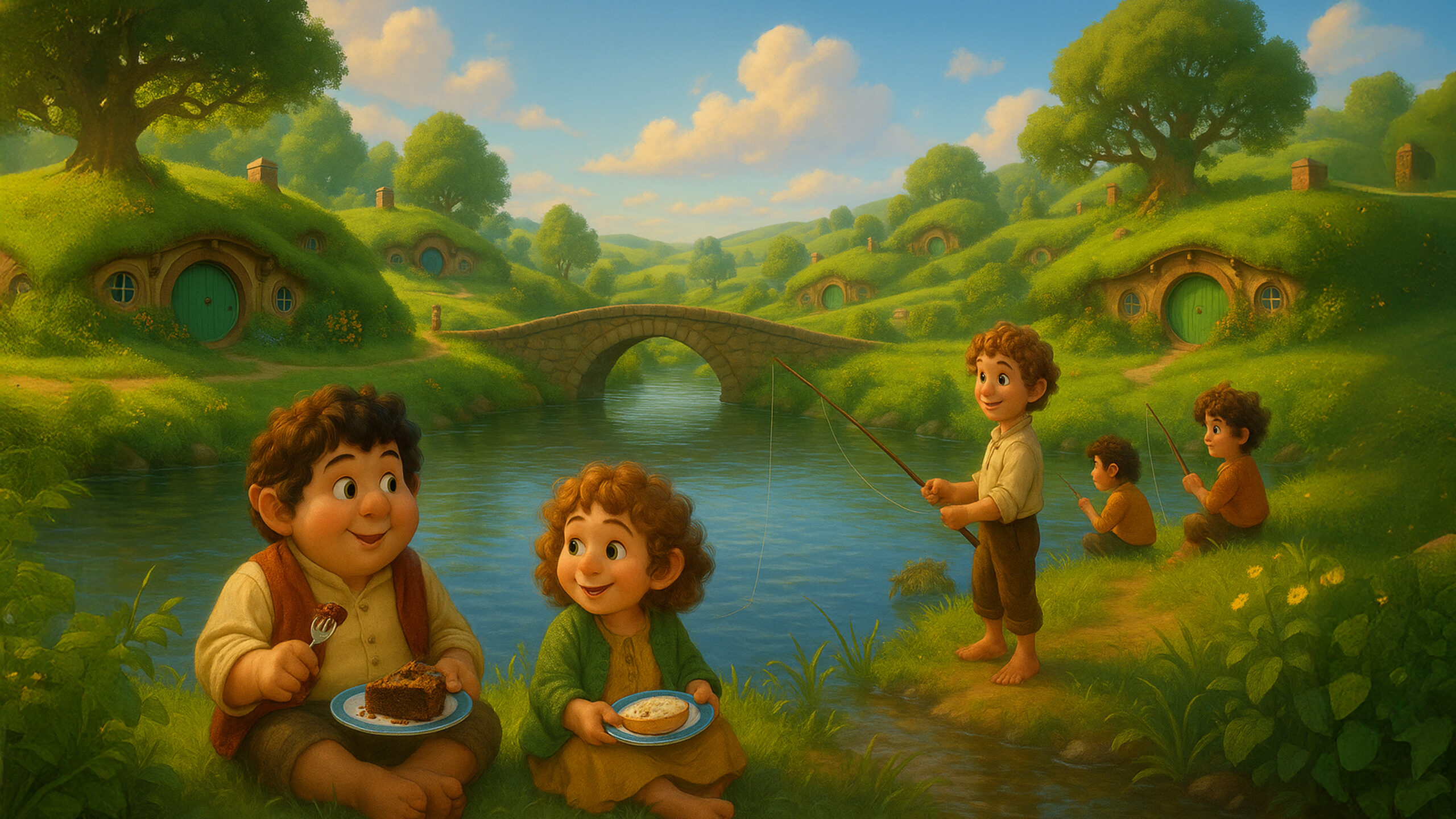
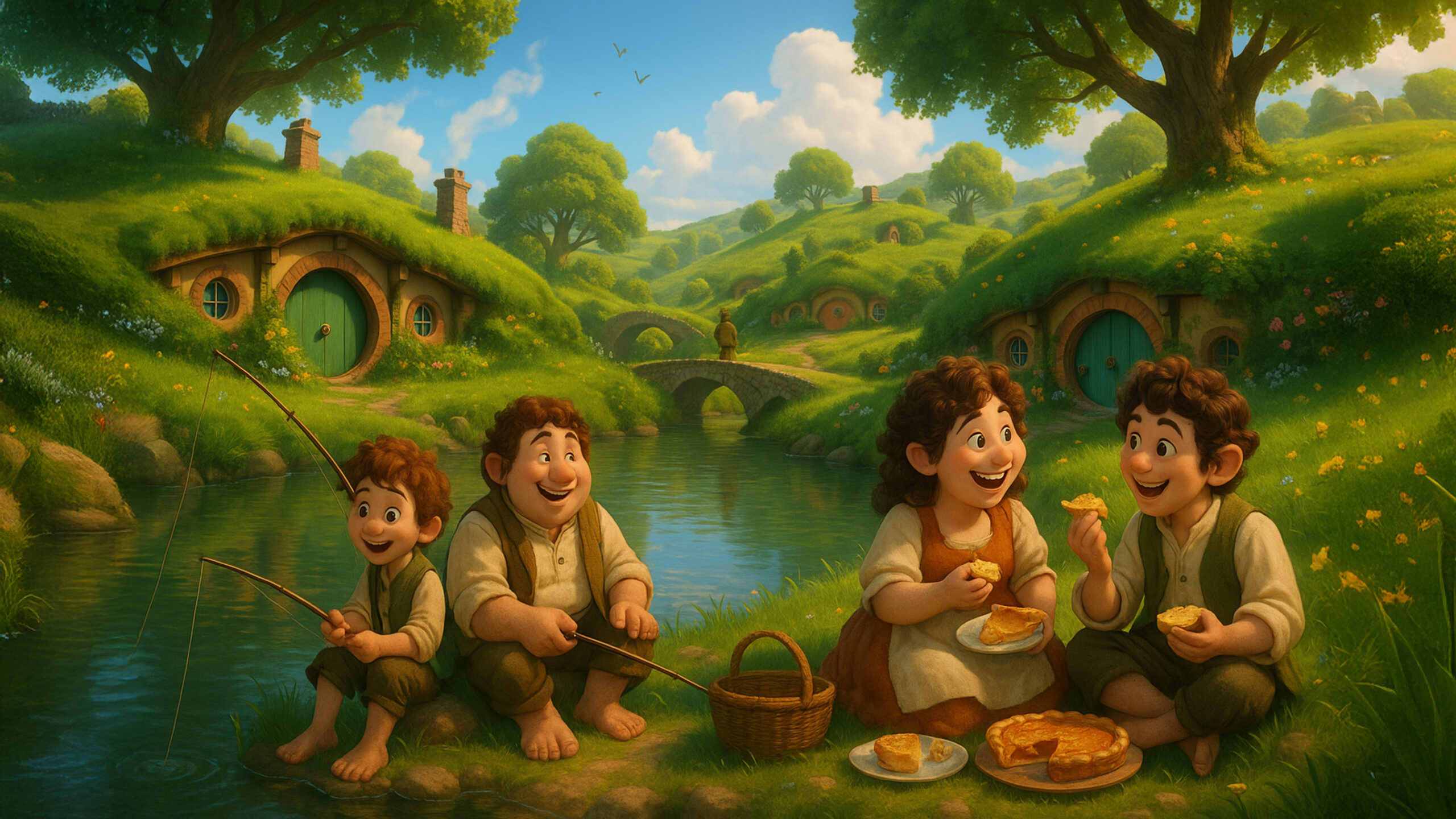
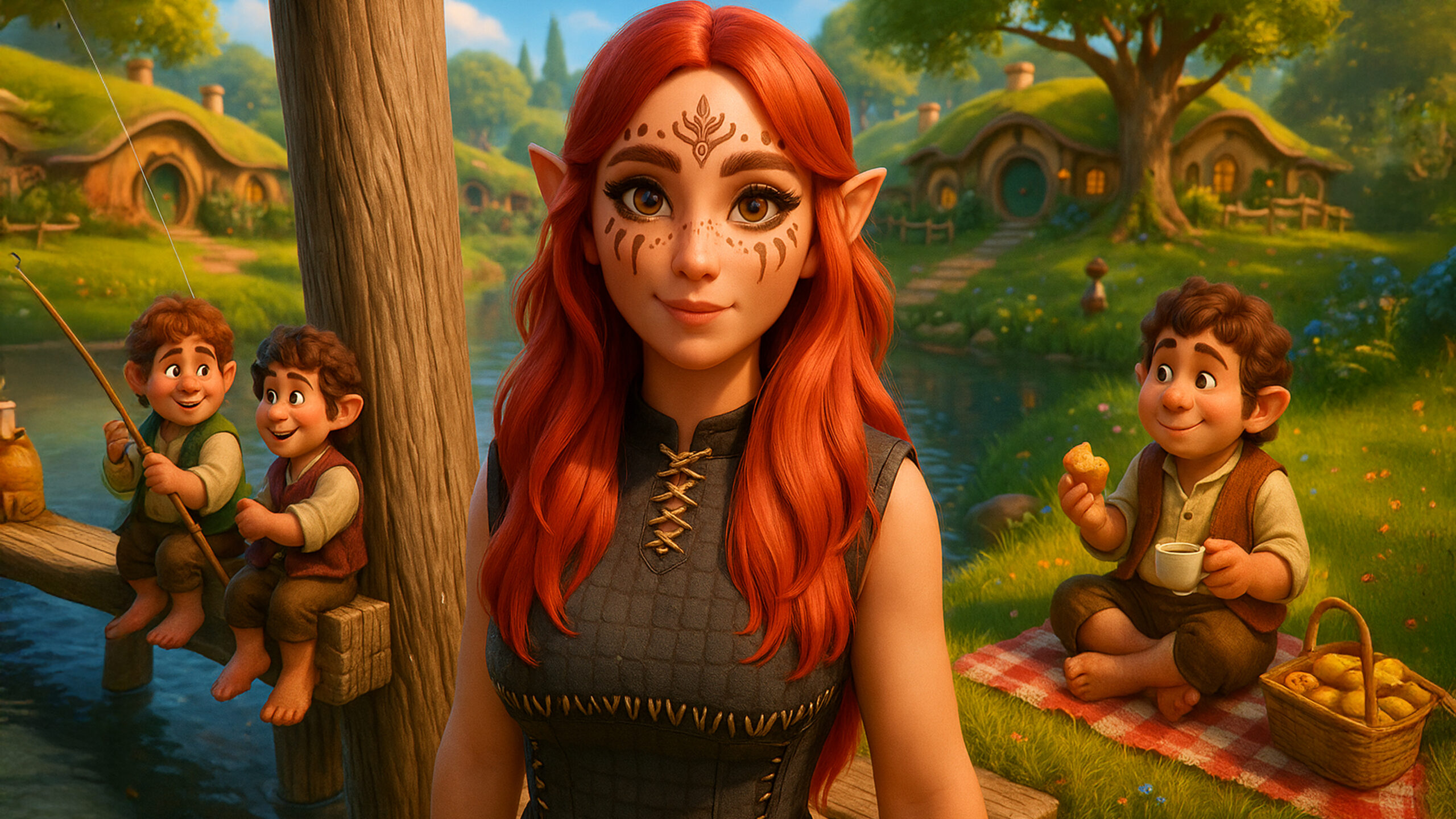
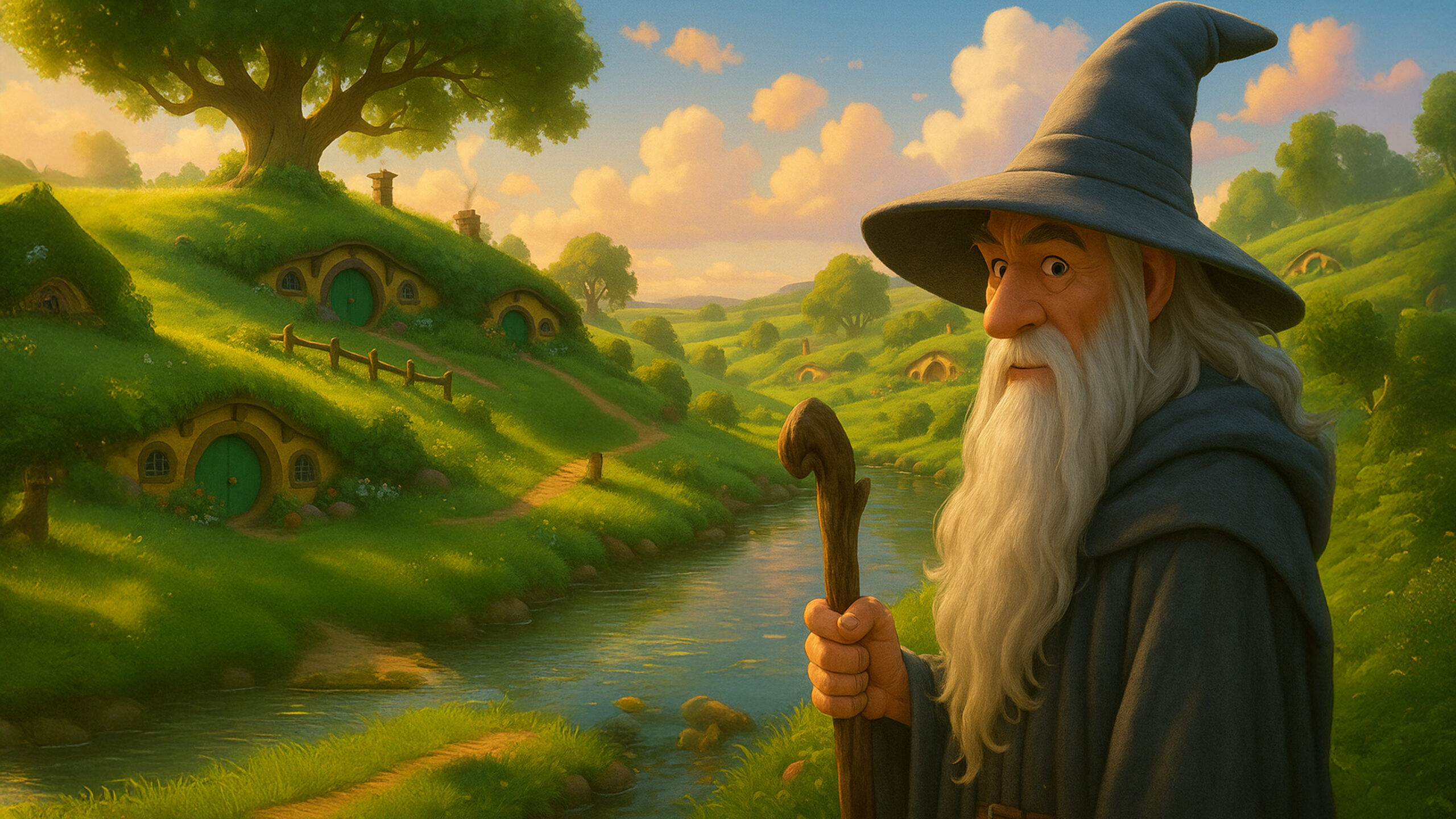
Learning by Doing: Emotion als Werkzeug
I learn something new with every piece – especially how music intensifies emotions:
- Instrument colour: oboe for longing, flute for lightness, clarinet for warmth.
- Registration: Higher = brighter, deeper = more earthy; too much height can be annoying, too much depth smears.
- Rhythm: Dance figures bring movement, longer notes bring calm.
- Texture: Fewer voices = clear focus; more voices = fullness, but dose carefully.
“Hobbingen” is a small catalogue of these decisions – and an indication of where I want to go next.
Listen in, dream away
Watch the video, listen to the music and imagine your own scenes.
YouTube-Video:

